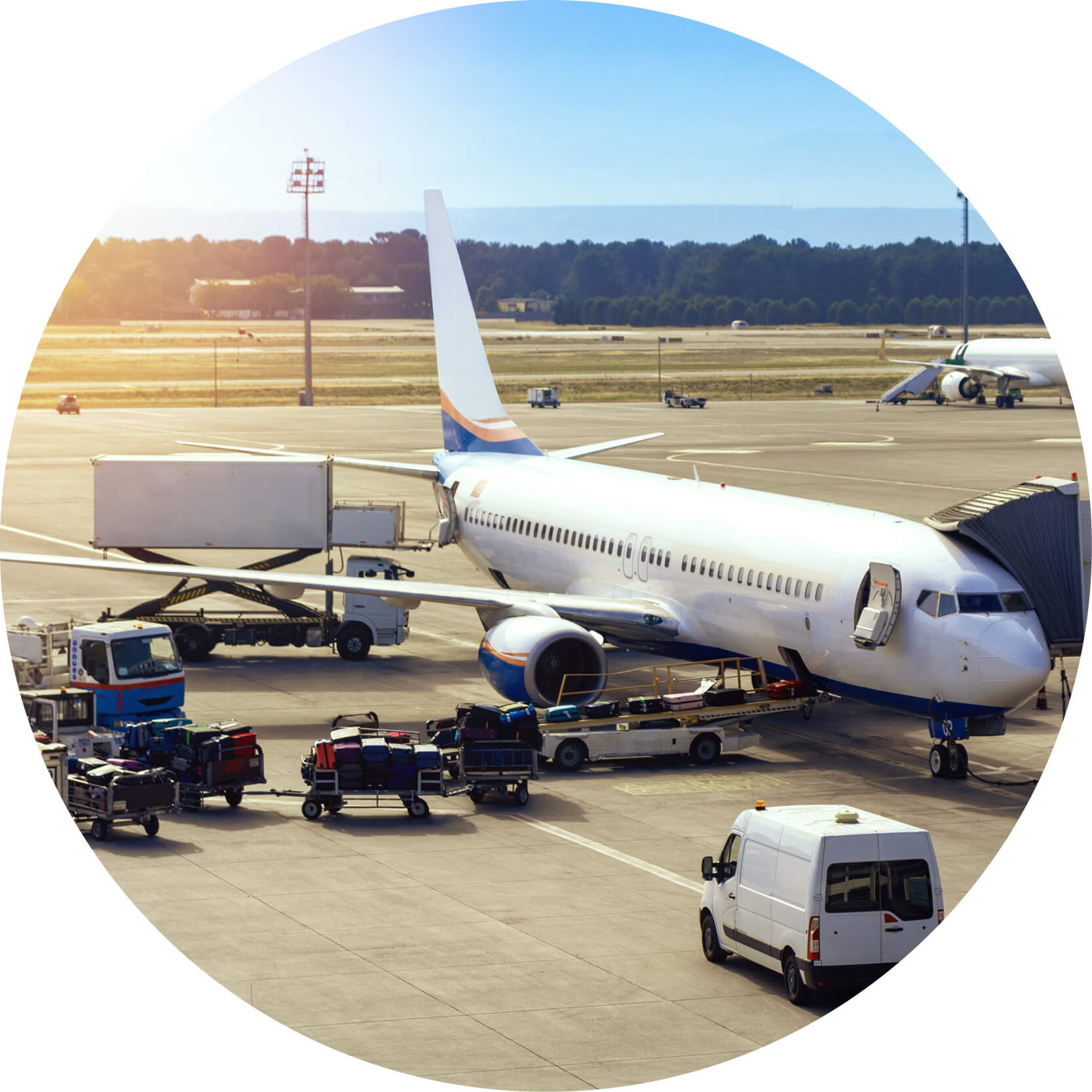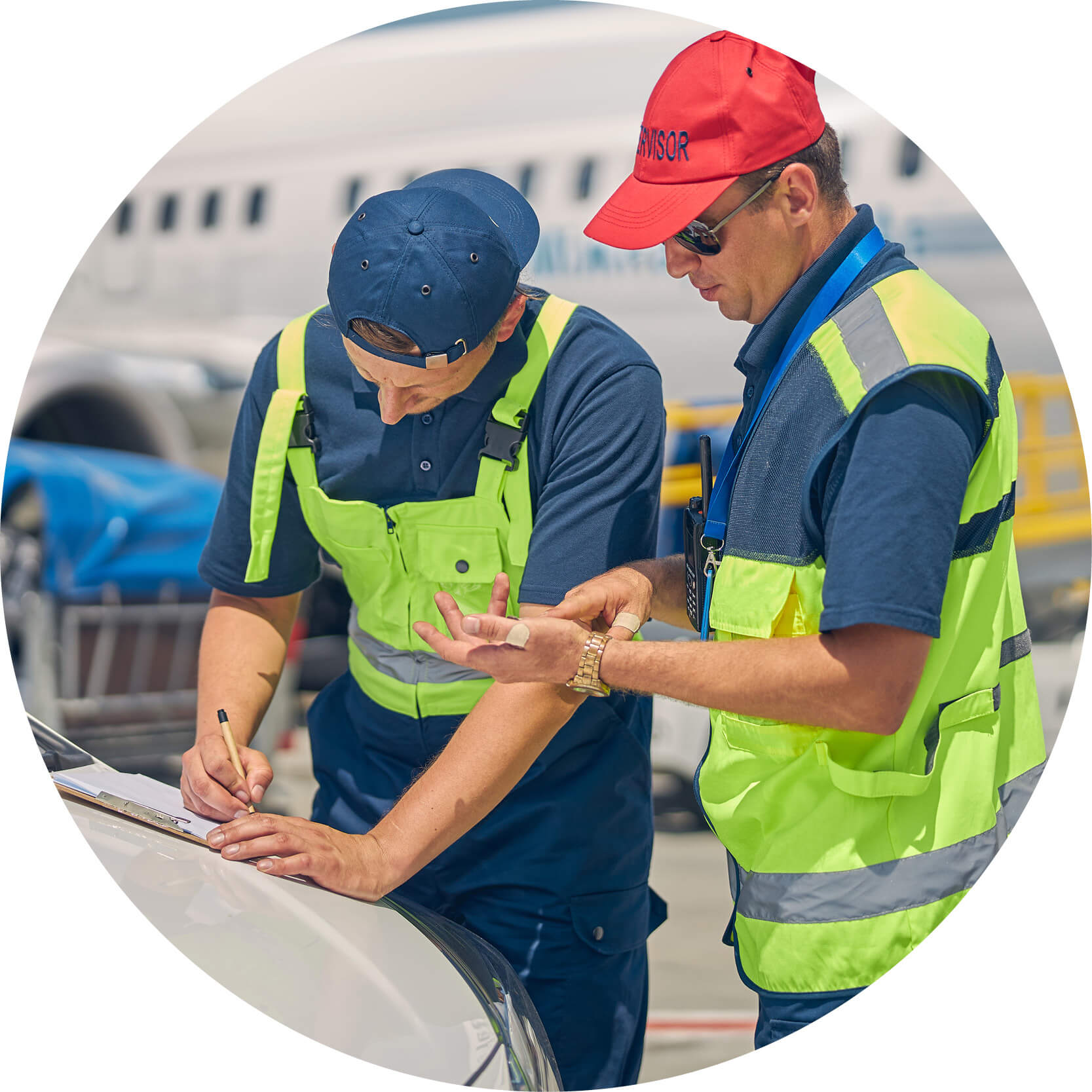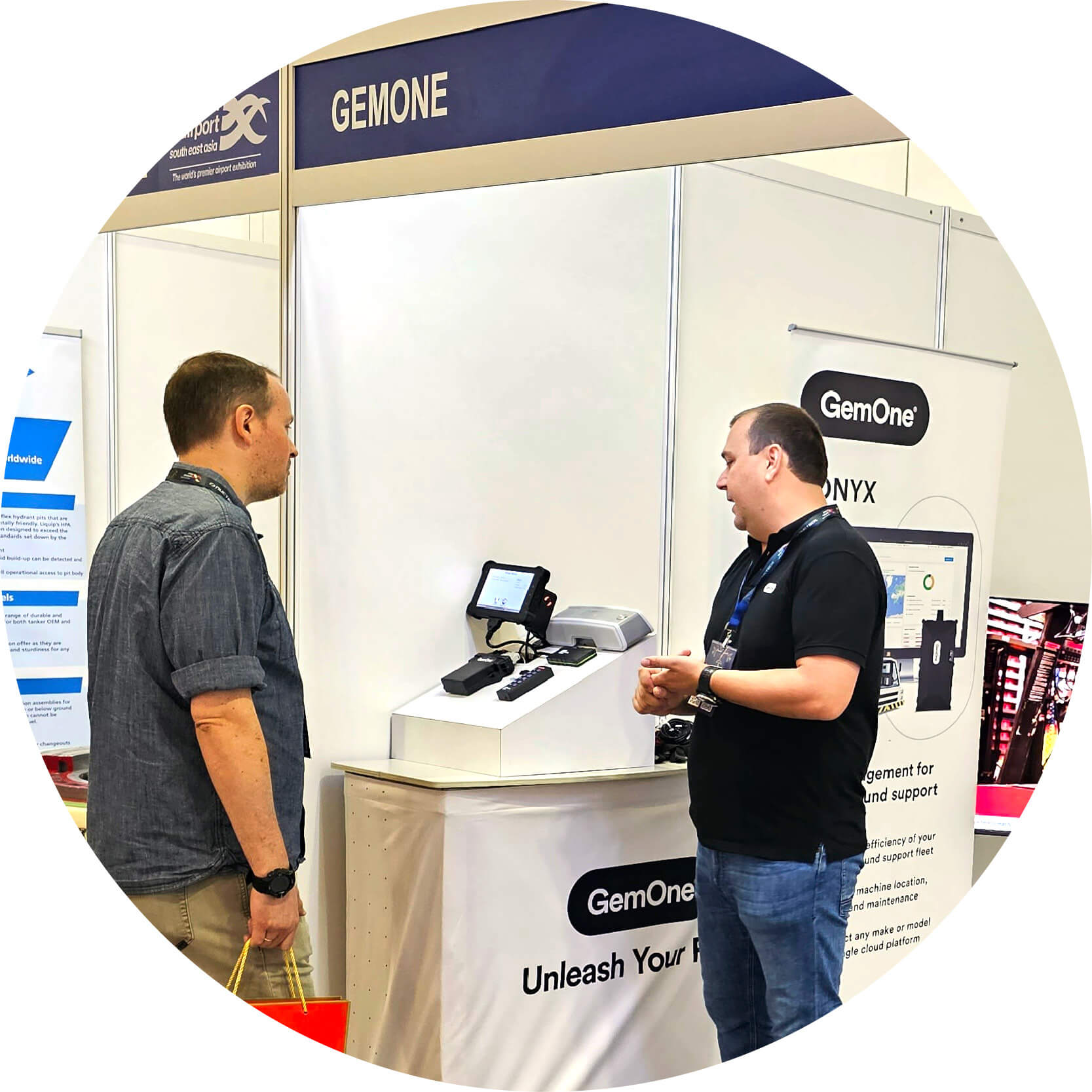How telematics can benefit the airport industry
- Fleet efficiency
- Fleet management
- Material handling
- Security and safety
Telematics has been adopted at a rapid pace in many industries.
Commercial car manufacturers have deployed telematics in on-road vehicles to track location and periodic maintenance. Heavy equipment rental companies have used it to make their mixed industrial fleets more efficient. Material handling companies have put telematics at the centre of their warehouse operations, enhancing the safety of their employees, workplaces, and machines.
But recently, there are more and more industries turning to telematics for the benefits it offers .

Airports are one of those sectors, and in particular, those managing airport ground support equipment. We recently visited the Inter Airport South East Asia show in Singapore where our representatives were able to talk first-hand about the use cases of telematics in fleets of ground support equipment.
They may be in the business of servicing aircraft operations, but the principles of airport ground support equipment businesses are fundamentally the same as those in the other industries that have benefited from telematics: to work efficiently and to keep everyone safe.
So what are the use cases of telematics for ground support equipment businesses? And what are the specific features from which they will see business benefits?
5 Use Cases for Telematics in Ground Support Equipment
-
One Single Source of Truth
Telematics helps ground support handlers get the full picture of their fleet and operations, with a system that is scalable across airports.
It offers real time information about the fleet and helps to manage labour costs, fuel consumption, and set targets. Telematics helps airports comply with safety regulations, with compliance guaranteed through recorded data.
-
A more efficient fleet
Telematics offers real-time, comprehensive insights into the efficiency of a fleet. Managing a mixed fleet is not always easy, but recent technological developments and user-friendly software have brought about a new generation of smart telematics.
Telematics software allows fleet and ground support equipment managers to receive alerts and reports on driving events, as well as any idling. Equipment operator behaviour can be better understood through reports for the entire fleet. The data offers insights about the improvements that may be needed to meet economic goals. GPS technology, with features such as location tracking and geofencing, allow fleet managers to track their fleet in real-time.
Businesses can monitor wear and tear from poor servicing, combat rising insurance costs, and avoid additional expenditure on damage and accident repairs.

-
A safer workplace
Ground support equipment businesses work with multiple machines and many staff. Often, these staff members are located within busy airport environments. Safety has to be a priority at all times.
Telematics offers a number of customisable features that can prove to be a huge benefit to ground support companies.
In such a busy environment it is essential that a machine is being operated by someone with the correct training and is being used in the correct way, which is why safety checklists are essential. These checklists ensure that pre-start checks are mandatory and they can be tailored to each vehicle.

When an impact occurs, telematics systems send instant notifications to those in charge, making it easy to identify which operators and areas are most prone to incidents.
If an impact should occur, there are options to set lockout thresholds to stop machines from working after an impact.
When a ground support machine is in operation it is important to have a clear view of the vicinity in which it is working. A 360° proximity warning system can solve this issue. The warning system equips machines with the alerts and actionable insights needed to reduce incidents and make airports safer. Cameras are an option too, offering the sightlines needed to avoid collisions.
-
Better fleet maintenance
Some airport ground support equipment businesses look at maintenance reactively, focusing on a maintenance issue only when it arises. But this strategy can lead to more costs and risks.
Vehicles that are not well maintained can become unsafe and dangerous for operators and those in the vicinity of the machine. By focusing on prevention, companies will see a reduction in maintenance costs and an upturn in the life-cycle of their vehicles.
Telematics helps GSE managers create a comprehensive maintenance plan using alerts and reminders. They can track maintenance, reduce costs, increase safety, lower insurance premiums, and keep track of all aspects of fleet maintenance.
-
Valuable productivity insights
Having diverse teams and assets within an airport ecosystem means ground support fleet managers need intuitive and adaptable solutions that work with their fleet’s needs.
Telematics can help increase a fleet’s overall productivity, improve a company’s cost efficiency, and provide the best possible service to customers through timely and optimised services. Detailed and customisable insights give a comprehensive view of a fleet’s current performance and allow operators to identify areas of productivity deficiencies.
When large quantities of data are collected in real-time, GSE fleet managers are empowered to make better-informed and immediate decisions. That is especially true with regard to resource management and productivity. From monitoring fuel usage to asset location, beacons and sensors can be installed to track nearly every aspect of GSE operations. Telematics allow officials to allocate employees and equipment to achieve maximum productivity, as well as being able to monitor and report on their efforts.

8 Features of Telematics which Benefit Airport Ground Support Equipment Businesses
Telematics offer a multitude of high functioning capabilities including:
- On-screen Safety Checklists, with operator lockout if there’s a critical issue. This feature ensures machines have been checked and determined safe to operate. It tracks user behaviour and safety issues with real time data on a cloud platform.
- Impact Reporting gives airport ground support equipment managers instant notifications of impacts so they can identify which operators and areas are most prone to incidents. Managers can set up lockout thresholds to stop machines working after an impact.
- Operator Access Control allows managers of GSE to give access to equipment only to approved operators via a pin code, RFID card, or fob. They choose who they want to operate each machine, based on their own criteria of certifications and training.
- With Session Reporting, GSE businesses can monitor the activity of operators on a daily basis, gaining insights on key time, seat time, and hours of movement.
- 360° Proximity Warning Systems enable companies to safeguard their employees and pedestrians from potential collisions. This system delivers reports on all near-misses so managers can see which operators, machines, and areas are most prone to accidents.
- Cameras automatically record video to capture data that assists incident investigations. They are easily installed and can be repositioned as needed.
- Digital Weight Scales have the ability to accurately read load weights to within 2% of the machine rated capacity. Managers of ground support equipment receive alerts when a machine surpasses weight limits set by the company.
- Data is stored and accessed via an Online Cloud Platform that offers valuable business insights. Telematics can also be fully customisable, meaning there are additional add ons such as battery monitoring solutions.

Telematics for ground support equipment is at the forefront of our minds right now.
This month, GemOne joined the aviation industry at the Inter Airport South East Asia show in Singapore. Over the course of 3 days (March 1 – 3) our team met with professionals working in the aviation sector.
The Inter Airport South East Asia show is Asia’s leading airport exhibition, covering all areas of airport-related technology, equipment, and services.
IASEA provides the perfect platform for airport solution providers to boost and elevate their potential. It’s where some of Asia’s most influential decision-makers from the airport industry come together and gain valuable insights on trends that are shaping the future of Asia’s airports.
If you’d like to see how our Sapphire safety management solution can benefit your airport ground service equipment business, don’t hesitate to reach out.

Top articles





